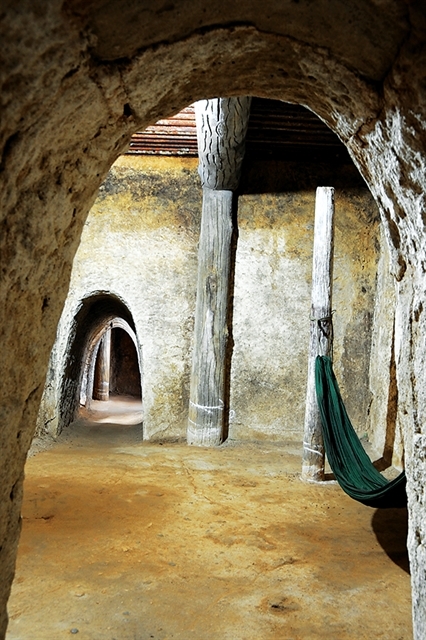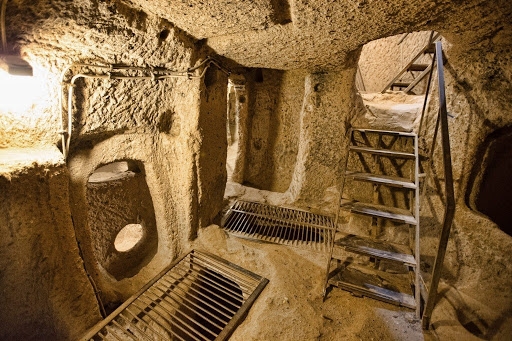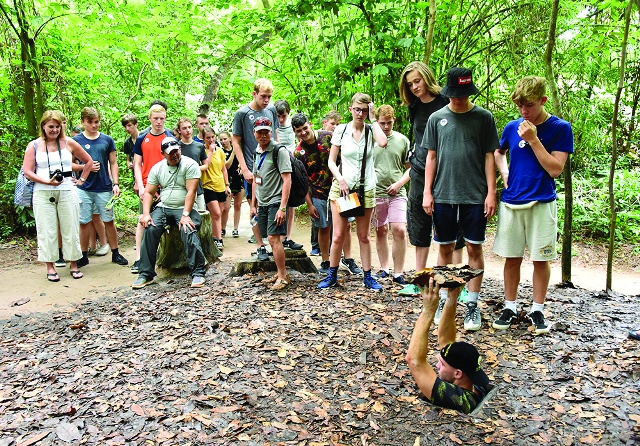Ben Dinh Cu Chi Tunnels – a historical site that attracts visitors to Saigon
Ben Dinh Cu Chi Tunnels is a famous historical site that attracts tourists when coming to Saigon. Visiting
The People’s Committee of Ho Chi Minh City is working on a dossier seeking UNESCO World Heritage Site recognition for Cu Chi guerrilla warfare tunnels.
Built by South Vietnamese liberation forces as shelter from US and Sai Gon troops during the war, the site is known over the world, but even many locals have yet to visit the tunnels, according to VNS.
First formed in 1948 during the resistance war against the French colonialists, the original network of tunnels was in Tan Phu Trung and Phuoc Vinh An wards.
Initially, the tunnels had only short paths and simple structures that were used to hide documents, weapons, and resistance members deep inside the enemy-controlled area.
Only during the anti-American war were the tunnels reinforced and widened.
Beginning in 1961, when the Party Committee and headquarters of the Sai Gon-Gia Dinh Military Region of the liberation forces chose Cu Chi as an operating area, the tunnel system maximized its use for years, especially in 1966, against the Americans broadening the war in the South.
With their indomitable strength, Cu Chi’s resistance forces and local people created a system of crisscrossing tunnels with multiple floors, with more than 200km of underground trenches in total.
For a long time, the enemy attacked the base and the tunnel network relentlessly by pumping water into the tunnels, using German shepherd dogs to hunt and identify the tunnels then using bombs to destroy them.
The US forces were involved in 5,000 attacks that aimed to wipe out the Cu Chi resistance base. In addition, thousands of tonnes of various chemical toxins were sprayed on the area.
But, relying on the tunnel network, the Vietnamese liberation soldiers and Cu Chi locals were able to counter all the enemy attacks.
Throughout the two resistance wars against the French and the Americans, the resistance army and the people of Cu Chi achieved outstanding victories.
They engaged in 4,269 big and small fights, eliminated 22,582 enemy troops, destroyed and took over 5,168 military vehicles (mostly tanks and armored vehicles), shot down and destroyed 256 airplanes (mainly helicopters), sank and burned 22 warships and boats, and captured 8,581 guns of all types. They also destroyed 270 enemy stations in Cu Chi District.
The system has significantly contributed to Vietnam’s major victories such as the 1968 Spring Mau Than General Offensive and Uprising, and the Great 1975 Spring Victory.
After 1975, the tunnels have been preserved and upgraded to become a revolutionary historical relic site and is opened to tourists.
According to the management board of the Cu Chi Tunnels, the relic site has welcomed about 1.5 million visitors each year, including foreign high-ranking leaders and military officers.
Apart from the tunnels as a spotlight, the area now features a site replicating a small village in the liberated Cu Chi zone during the 1960-1975 period, along with a corner displaying weapons.
Tourists will also have a chance to experience farming activities and taste special dishes in Cu Chi, notably “khoai mi” (cassava) that was a main dish of locals during wartime.
The People’s Committee of Ho Chi Minh City is working on a dossier seeking UNESCO’s recognition for the tunnels.
Vietnam is home to eight UNESCO World Heritage sites, including Phong Nha-Ke Bang National Park, My Son Sanctuary, Hoi An Ancient Town, the Complex of Hue Monuments, and the Citadel of the Ho dynasty in the central region.
The other sites are Ha Long Bay, the Trang An Landscape Complex, and Thang Long Imperial Citadel, which are located in the north.
If the Cu Chi Tunnels network is recognized, it will be the south’s first UNESCO World Heritage Site./.
Hannah Nguyen


